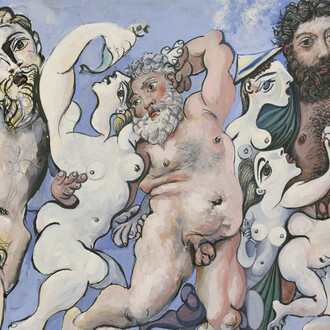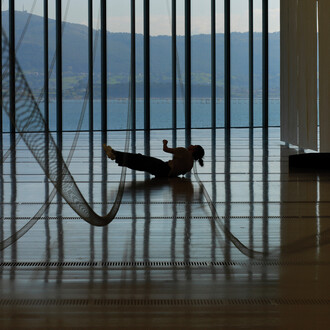I am like a blind man who, through touch, recognizes inner truth, or like the cantaores, who draw their song from deep within their entrails, so profound that it cannot take shape in the throat; the intensity of their expression—and sometimes their pain—is such that it does not become a melody, but emerges outward as a sob, […] as a cry of what is intimate, popular, simple, and direct.
(Fernando Mignoni, Hondo, 1961)
Galería Elvira González opens on September 11 Fernando Mignoni’s first exhibition at the gallery. Twenty works dating from 1969 to 1991 from the artist’s different periods, from his beginnings as a young painter interested in the human figure, his subsequent evolution towards structured compositions where nature and landscape replace the figure, to his last completely abstract, constructivist works that denote an interest in space.
Fernando Mignoni (Madrid, 1929-2011) grew up in an artistic environment marked by the influence of his father, a set designer and painter, and his mother, a flamenco dancer. From a young age, he showed a vocation for the plastic arts, training at the San Fernando School of Fine Arts and the Círculo de Bellas Artes. In the 1950s, he began his exhibition career with group and solo shows, standing out for his figurative and expressionist style in which he integrated real objects. He co-founded the Hondo group alongside other important artists of his generation.
In 1963, he moved to Paris, where he came into contact with the School of Paris and consolidated his artistic and gallery vision. Upon returning to Madrid, he founded the influential Galería Theo with Elvira González, which introduced international figures to Spain and promoted the avant-garde. His painting evolved towards abstraction, minimalism, and three-dimensionality, creating works that explored the boundaries between painting, sculpture, and perception. He exhibited in major museums and biennials, and in 1984 he had a major retrospective at the Spanish Museum of Contemporary Art.













![Saul Steinberg, The museum [El museo] (detalle), 1972. Cortesía del Museo de Arte Abstracto Español](http://media.meer.com/attachments/dfbad16c22c5940b5ce7463468ac8879f3b4bf23/store/fill/330/330/042ecf3bcd2c9b4db7ddbc57cb32e950c095835f7b5cd55b6e1576a6e78c/Saul-Steinberg-The-museum-El-museo-detalle-1972-Cortesia-del-Museo-de-Arte-Abstracto-Espanol.jpg)


